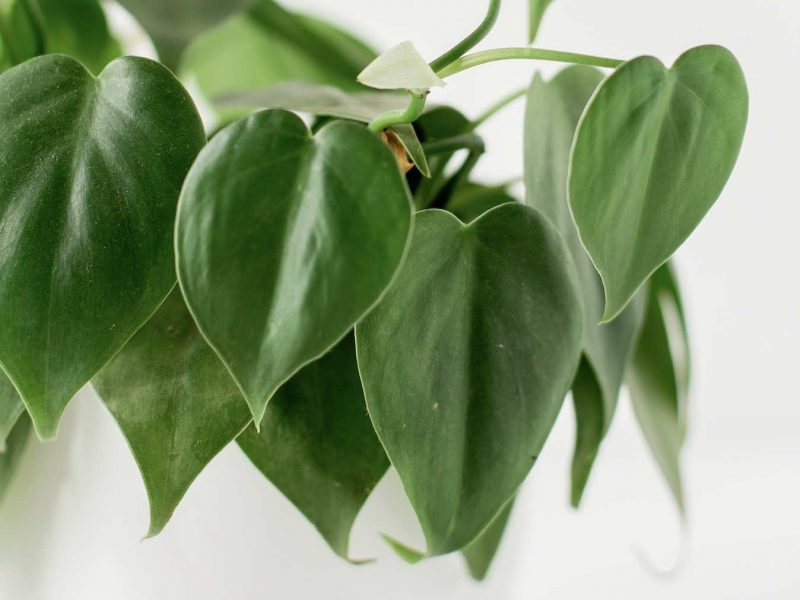
These plants actually have heart-shaped leaves
If you’re after a gift for your partner, best friend or yourself, then these plants are definitely a great choice. They actually have natural heart-shaped leaves that make falling in love with them pretty easy! Below you’ll find a little bit about each plant, including their features and brief care requirements.
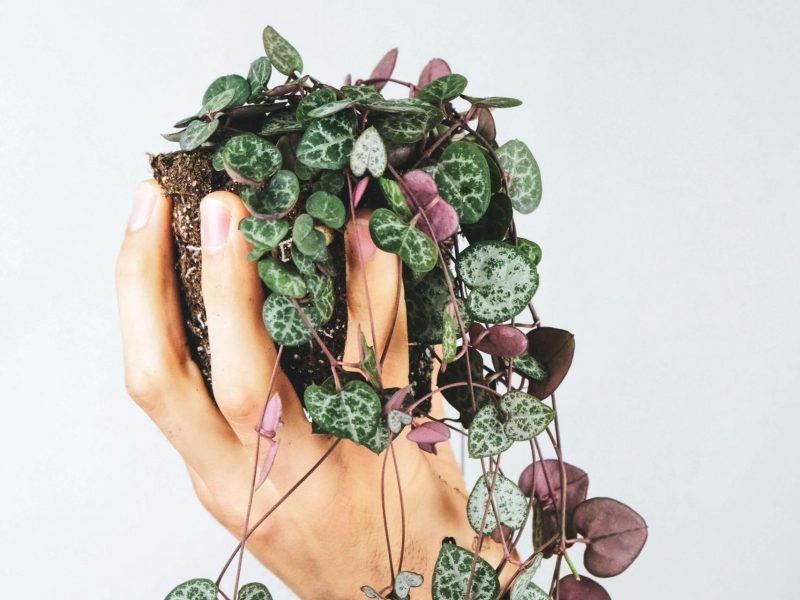
String of Hearts
Ceropegia woodii
Native to South Africa, the String of Hearts should be top on your list for trailing houseplants. You don’t get much more unique than their speckled heart-shaped leaves. The other thing we love about the String of Hearts is that it’s such a fast grower over the spring and summer months, you’ll blink and there will be two new leaves popping out somewhere.
The String of Hearts is a semi-succulent plant meaning they don’t need much water. They have short, delicate and shallow roots making them very susceptible to root rot if overwatered. Oh, and because they have such a small root system, you won’t need to repot for a quite a while.
It makes the perfect plant for hanging down shelving, and because its pet friendly, you don’t need to worry about it ever becoming too long!
Find out more in our String of Hearts care guide.
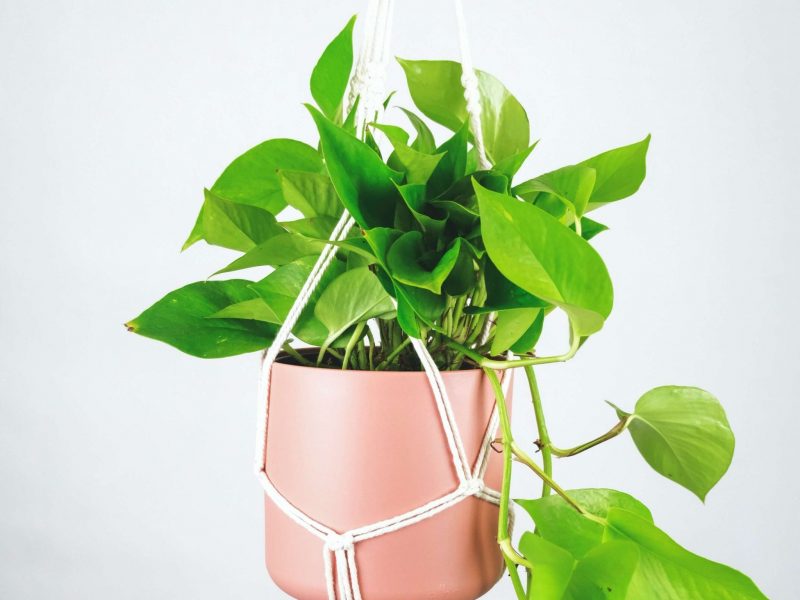
Devil's Ivy
Epipremnum aureum
These are pretty unique houseplants, not just because of their beautiful heart-shaped leaves, but because they actually prefer lower-light conditions over anything else! That’s where the name comes from, as they are well acquainted with the darkness. If you have a variegated variety, it will actually start to lose its pattern if placed in too much sunlight. So you don’t need to feel guilty about putting a Devil’s Ivy in a shady spot because it will actually love you for it.
They are also pretty hardy plants in terms of their other care requirements. They don’t need complicated watering schedules or specific pruning so are perfect for any new plant parents. You can’t really go wrong with these at all!
When it comes to styling the Devil’s Ivy plant, shelving is where they thrive as it gives it room to cascade dramatically out of the pot. They can be trained to grow upwards by a wall or moss pole so the option is yours. However you choose to grow your Devil’s Ivy, it’ll be beautiful
Find out more in our Devil's Ivy care guide.
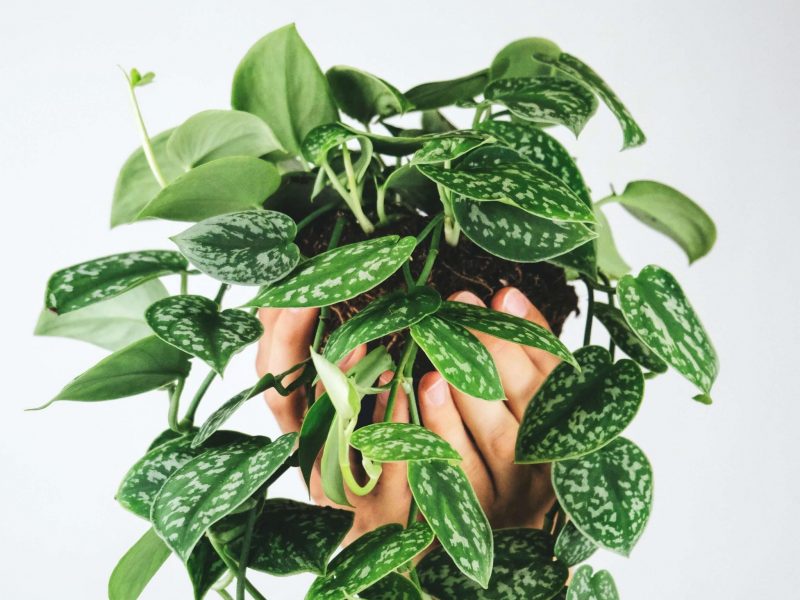
Satin Pothos
Epipremnum pictum Argyraeus
Known and loved for their unique silver speckled heart-shaped leaves, the Satin Pothos is the perfect houseplant for every plant parent as they are super simple to care for. They can grow quite quickly in the right conditions and are very easy to propagate, so cuttings and young plants can make great gifts.
Bright, indirect light and a consistent watering schedule will keep them happy and thriving. Avoiding colder rooms or areas with dryer air will really help in making sure your Satin Pothos will stay healthy all year round.
Originating from southeast Asia these plants will also appreciate a little extra humidity, so spraying them with a mist bottle every now and then will keep them closer to their natural environment.
Find out more in our Satin Pothos care guide.
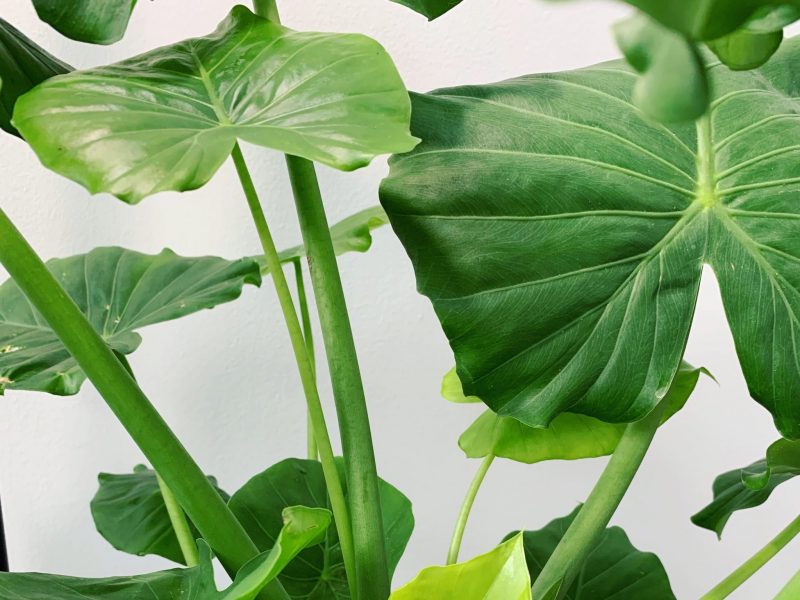
Elephant Ear
Colocasia
This one is definitely one to impress! WIth larger than life, heart-shaped leaves, Elephant Ear Plants are the new popular houseplant on the block! Whilst they are most commonly grown outdoors, they can adapt nicely to your home. With enough light, a little boost to the humidity using a spray bottle of humidifier and good moisture in the soil, your Elephant Ear Plant could soon be boasting leaves that are nearly a meter in length!
It will require a little bit of work though to keep your Elephant Ear Plant thriving, from daily misting, to regularly dusting the leaves as the sheer size of them make them a dust magnet, it’s important to tend to an Elephant Ear Plant to keep it happy and healthy.
Find out more in our Elephant Ear care guide.
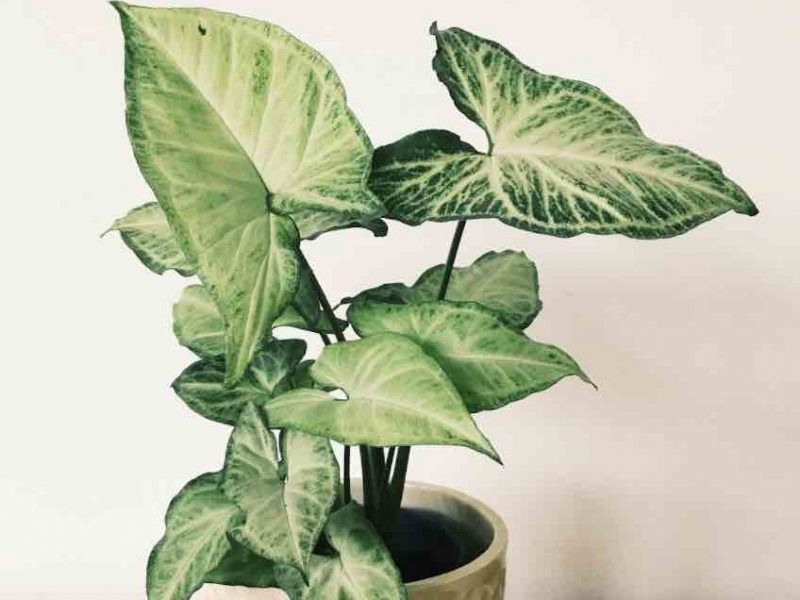
Arrowhead Plant
Syngonium podophyllum
Native to the tropical rainforests of Central and South America, the Arrowhead to have in your collection. When fully grown, they can reach nearly 2 meters tall with large heart-shaped leaves that can have a variety of colours and variegations.
As you can imagine, the Arrowhead likes warm and humid environments so you want to bring some of that rainforest feel to your home. Letting the soil dry out between waterings and ensuring a good humidity level is a great way to mimic their natural habitats and making sure they have bright, but indirect light will stop the leaves from burning.
With them being a little pickier over humidity and placement, we wouldn’t always recommend them for a starter houseplant. They’re also mildly toxic to pets, which doesn’t make them the most friendly for households with cats or dogs.
Find out more in our Arrowhead Plant care guide.














